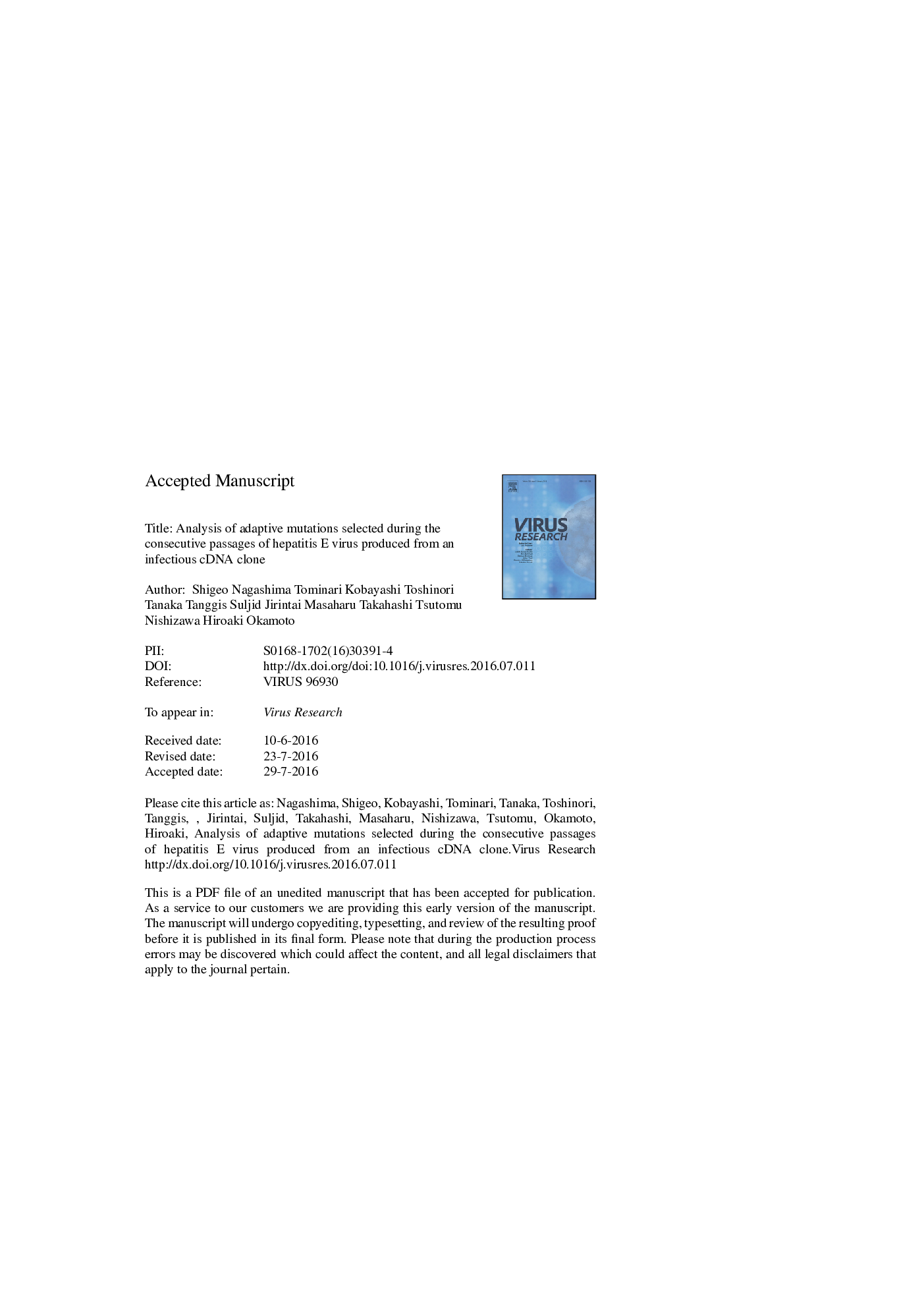| Article ID | Journal | Published Year | Pages | File Type |
|---|---|---|---|---|
| 6142033 | Virus Research | 2016 | 43 Pages |
Abstract
To characterize the genomic mutations of hepatitis E virus (HEV) during consecutive passages associated with adaptation to growth in cell culture, a cloned genotype 3 HEV [pJE03-1760F/wt, starting virus (SV)] was passaged 10 times in A549 cells, and the entire genomic sequence of the passage 10 (P10) progeny was determined. Compared to SV, P10 virus possessed two non-synonymous (T2808C and A5054G) and four synonymous mutations (C1213T, T2557C, C3118T and C4435T) in the ORF1. Full-length infectious cDNA clones with a single, double (T2808C and A5054G), or all six mutations, identical to P10, were constructed, and their replication capacity was compared. Four (C1213T, T2557C, T2808C and A5054G) of the six viruses with a single mutation grew more efficiently than SV. The P10 virus propagated more rapidly and grew more efficiently than SV and T2808CÂ +Â A5054G and reached a higher viral load (95.1- and 8.5-fold, respectively) at 20Â days post-inoculation. An immunofluorescence analysis revealed that a high percentage (>80%) of cells inoculated with the P10 virus expressed ORF2 proteins, while relatively low percentages (nearly 30% or 5%) inoculated with T2808CÂ +Â A5054G or SV, respectively, expressed ORF2 proteins. We found that not only non-synonymous but also synonymous HEV mutations are independently associated with increased virus production.
Keywords
Related Topics
Life Sciences
Immunology and Microbiology
Virology
Authors
Shigeo Nagashima, Tominari Kobayashi, Toshinori Tanaka, Tanggis Tanggis, Suljid Jirintai, Masaharu Takahashi, Tsutomu Nishizawa, Hiroaki Okamoto,
